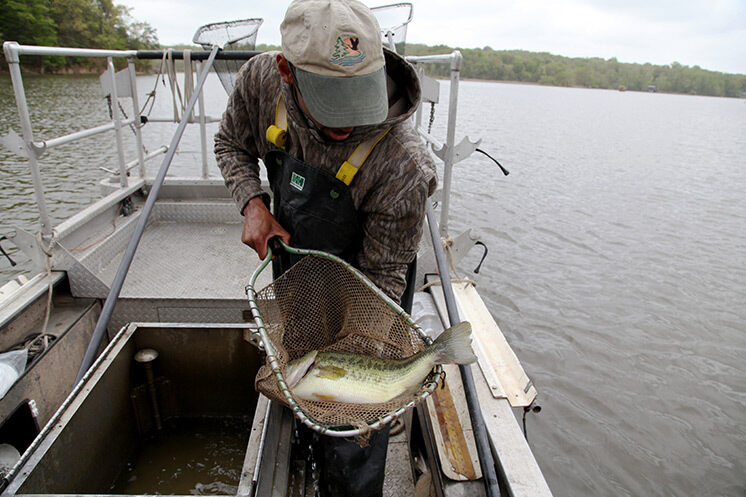Why Teach About Sustainable Fisheries?

Fish and crabs are iconic in the Chesapeake Bay. To many people, the Bay means enjoying a delicious crab cake or catching a trophy rockfish. These and other fisheries are a critical component of the economy and culture of the Chesapeake Bay, while the species themselves are important to the ecology of the Bay. Many Bay species are currently or were historically harvested both commercially and recreationally. These species each play an integral role in the Chesapeake Bay ecosystem and are connected to many other species in the food web. In addition to their biological role, they contribute tens of millions of dollars each year to the economies of Bay watershed states, while also supporting a way of life on the Bay that has existed for generations.
Why Should YOU Teach About Sustainable Fisheries?
If fishery populations are going to be sustained for the future, it’s important for students to understand what causes fish populations to change and how humans contribute to this change. Fish populations are affected by many factors, both natural and human. Natural causes of fish mortality can include disease, changes in the environment, and predation among others. Fishing mortality is the removal of fish by people for commercial or recreational harvest. If too many fish are being removed from the population, either naturally or by fishing, the population may not be able to successfully rebound to a sustainable level. In addition, it will be more difficult for populations to rebound if they are further stressed by factors such as pollution or low dissolved oxygen levels.
If a population is too low, both the sustainability of the fishery and the natural function of our ecosystem can be impacted. While we cannot directly control natural mortality, we can adjust fishing mortality and manage human-induced stressors, like pollution, to promote sustainable fish populations. When fish and shellfish stocks are abundant, we will ultimately be able to catch more now, while also maintaining a sustainable fish stock for future generations.
How Can YOU Teach About Sustainable Fisheries?
There are many ways to teach about sustainable fisheries in your classroom. You may want to start with the value of fisheries in general, and then continue with the importance of sustainability in the long-term success of fisheries.
Check out these classroom activities related to sustainable fisheries:
- Game of Life Lesson Plan: This lesson focuses on the role of fish in ocean ecosystems and the biological implications of overfishing. It also takes students through a fishing industry timeline to show how the industry has changed.
- Empty Oceans Lesson Plan: This activity introduces students to different fishing methods and the concept of bycatch. Students will begin to understand what makes certain fishing practices sustainable and how consumers can make sustainable seafood choices.
- Fishing for the Future: Students create a simulation of commercial fishing seasons and learn how different fishing practices affect their fish stock. This activity is a good illustration of the “tragedy of the commons” concept and helps students realize the multitude of factors that affect fish populations and fisheries management.
- Management of Commercial Fisheries Part 1 and Part 2: This two-part lesson is designed to give high school students knowledge of human effects on fisheries and the condition of fisheries over time. Part 1 focuses on fisheries as a nonrenewable resource; Part 2 compares fisheries from the past to the present and introduces the concept of sustainable fisheries management.
- FishWatch: Check out this website for information on choosing sustainable seafood. This resource explains the different factors that are considered when determining the sustainability of a certain seafood choice.
- Bay Backpack Fish Resources: Bay Backpack lists a variety of education resources related to fish, including fish and pollution, fishery management, and sustainable seafood.
